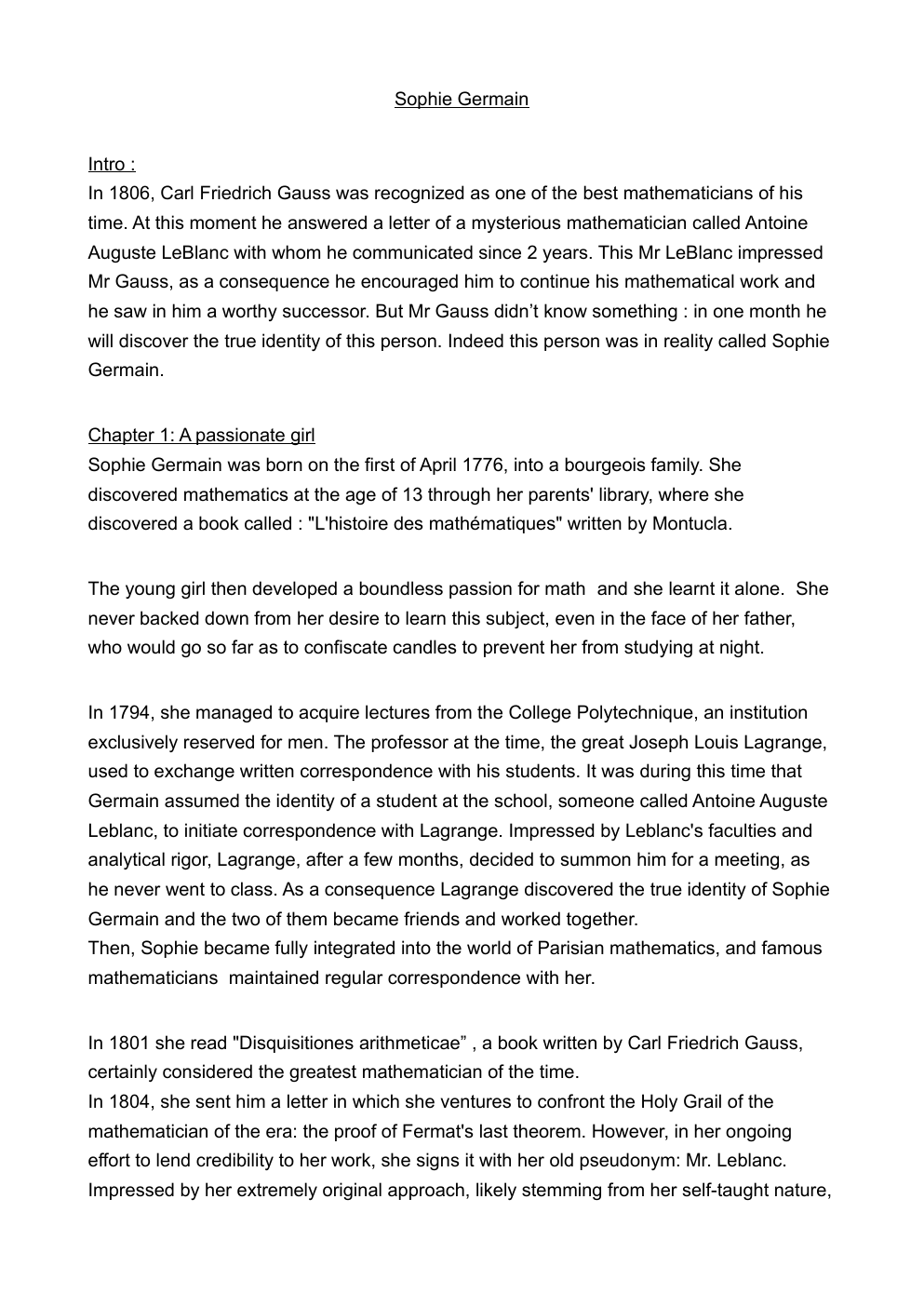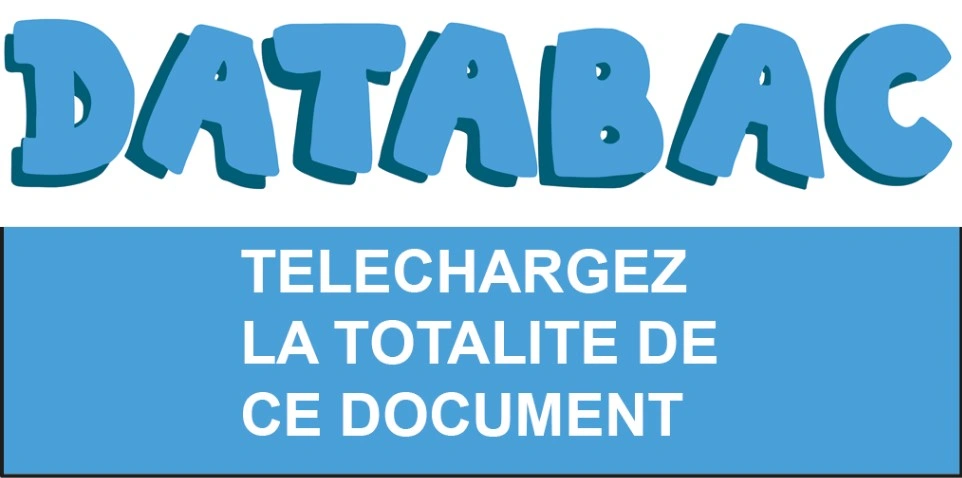Exposé anglais sur Sophie Germain
Publié le 02/04/2025
Extrait du document
«
Sophie Germain
Intro :
In 1806, Carl Friedrich Gauss was recognized as one of the best mathematicians of his
time.
At this moment he answered a letter of a mysterious mathematician called Antoine
Auguste LeBlanc with whom he communicated since 2 years.
This Mr LeBlanc impressed
Mr Gauss, as a consequence he encouraged him to continue his mathematical work and
he saw in him a worthy successor.
But Mr Gauss didn’t know something : in one month he
will discover the true identity of this person.
Indeed this person was in reality called Sophie
Germain.
Chapter 1: A passionate girl
Sophie Germain was born on the first of April 1776, into a bourgeois family.
She
discovered mathematics at the age of 13 through her parents' library, where she
discovered a book called : "L'histoire des mathématiques" written by Montucla.
The young girl then developed a boundless passion for math and she learnt it alone.
She
never backed down from her desire to learn this subject, even in the face of her father,
who would go so far as to confiscate candles to prevent her from studying at night.
In 1794, she managed to acquire lectures from the College Polytechnique, an institution
exclusively reserved for men.
The professor at the time, the great Joseph Louis Lagrange,
used to exchange written correspondence with his students.
It was during this time that
Germain assumed the identity of a student at the school, someone called Antoine Auguste
Leblanc, to initiate correspondence with Lagrange.
Impressed by Leblanc's faculties and
analytical rigor, Lagrange, after a few months, decided to summon him for a meeting, as
he never went to class.
As a consequence Lagrange discovered the true identity of Sophie
Germain and the two of them became friends and worked together.
Then, Sophie became fully integrated into the world of Parisian mathematics, and famous
mathematicians maintained regular correspondence with her.
In 1801 she read "Disquisitiones arithmeticae” , a book written by Carl Friedrich Gauss,
certainly considered the greatest mathematician of the time.
In 1804, she sent him a letter in which she ventures to confront the Holy Grail of the
mathematician of the era: the proof of Fermat's last theorem.
However, in her ongoing
effort to lend credibility to her work, she signs it with her old pseudonym: Mr.
Leblanc.
Impressed by her extremely original approach, likely stemming from her self-taught nature,
Gauss initiates a two-year correspondence with Mr.
Leblanc.
When Gauss learnt the true
identity of Sophie Germain in 1806, he congratulated her for succeeding in entering the
world of mathematics despite the obstacles faced by women.
Chapter 2: The Academy of Sciences Prize
Simultaneously with her correspondence with Gauss, Germain closely follows a prize
offered by the Academy of Sciences.
In 1808, the physicist and musician Ernst Chladni gave a lecture in which he covers a
copper plate with very fine sand and then rubs it with a violin bow.
The plate not only
started to vibrate and emit a sound but, more importantly, mysterious geometric figures
appeared on the plate.
The astonishing phenomenon, then called "vibrating plates," captured the attention of
Emperor Napoleon Bonaparte, who requested the French Academy to award a prize to the
researcher who can adequately explain this phenomenon.
In 1811, precisely on October
21, only one paper was submitted to the members of the commission responsible for
awarding the prize.
Unfortunately, the main equation Germain had formulated to model the
vibration problem was incorrect, and the jury did not award the prize to Germain.
However,
as only one candidate had submitted her paper on time, and considering that the allotted
time was too short, the academy decided to launch a second prize for the explanation of
this phenomenon, with a deadline in 1813.
This time, unlike....
»
↓↓↓ APERÇU DU DOCUMENT ↓↓↓
Liens utiles
- exposé sur les violences animalières (ANGLAIS)
- Anglais exposé: Lincoln
- Exposé Anglais The printing press
- Exposé sur l'histoire du canada anglais
- exposé anglais

































